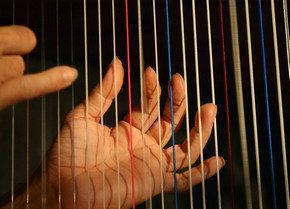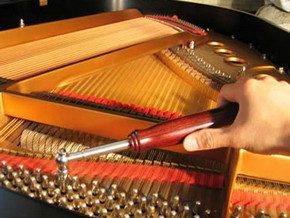Oh, these solfeggio tritones!
Often in music school they give homework assignments to build newts. Solfeggio tritones, of course, have nothing to do with the Greek god of the deep sea, Triton, or, in general, with the animal world either.
Tritones are intervals that are so called because between the sounds of these intervals there are neither more nor less, but exactly three tones. Actually, tritones include two intervals: an augmented fourth and a diminished fifth.
If you remember, there are 2,5 tones in a perfect quart, and 3,5 in a perfect fifth, so it turns out that if the quart is increased by half a tone and the fifth is decreased, then their tonal value will be equal and will be equal to three.
In any key you need to be able to find two pairs of tritones. A couple is a4 and mind5, which mutually turn into each other. One pair of tritones is always in natural major and minor, the second pair is in harmonic major and minor (a pair of characteristic tritones).
To help you, here is a solfeggio sign – tritones on the steps of the mode.
From this tablet it is immediately clear that increased fourths are either on the IV or VI level, and diminished fifths are either on the II or VII level. It is important to remember that in harmonic major the sixth step is lowered, and in harmonic minor the seventh step is raised.
How are newts resolved?
There is one general rule here: increased intervals with resolution increase, decreased intervals decrease. In this case, the unstable sounds of the tritones turn into the nearest stable ones. Therefore4 always resolves to a sext, and the mind5 – in third.
Moreover, if the resolution of the tritone occurs in natural major or minor, then the sixth will be small, the third will be major. If the resolution of tritones occurs in a harmonic major or minor, then, on the contrary, the sixth will be major, and the third will be minor.
Let’s look at a couple of examples in solfeggio: tritones in the key of C major, C minor, D major and D minor in natural and harmonic form. In the example, each new line is a new key.
Well, now I think a lot has become clearer. Let me remind you that today our focus was on Solfeggio tritones. Remember, yes, that they have three tones, and you need to be able to find two pairs in each key (in natural and harmonic form).
I just have to add that sometimes in solfeggio the tritones are asked not only to construct, but also to sing. It’s difficult to sing the sounds of a tritone right away, this trick will help: first, silently you sing not a tritone, but a perfect fifth, and then also mentally the upper sound goes down a semitone, after such preparation the tritone is sung easier.


